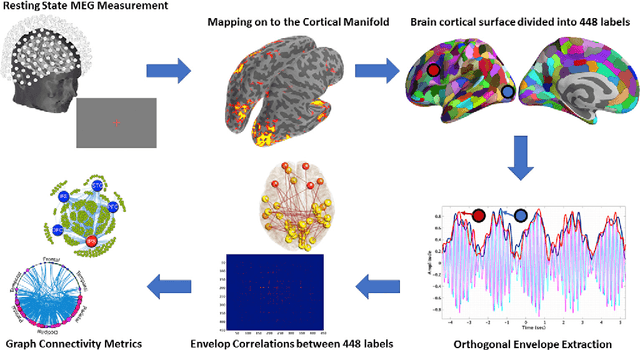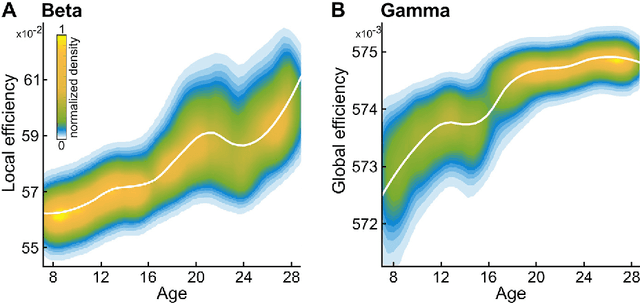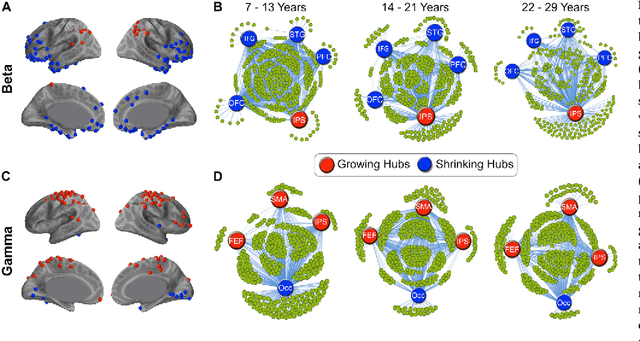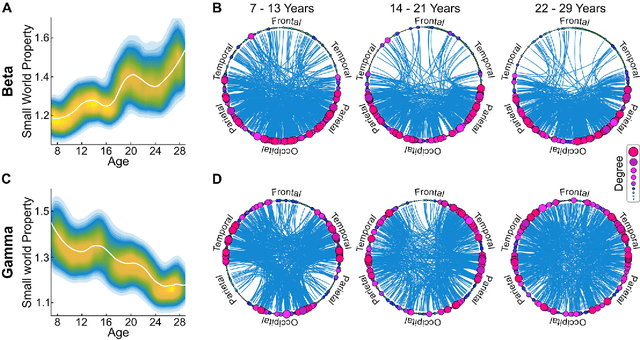Konstantinos Michmizos
EEGSN: Towards Efficient Low-latency Decoding of EEG with Graph Spiking Neural Networks
Apr 18, 2023



Abstract:A vast majority of spiking neural networks (SNNs) are trained based on inductive biases that are not necessarily a good fit for several critical tasks that require low-latency and power efficiency. Inferring brain behavior based on the associated electroenchephalography (EEG) signals is an example of how networks training and inference efficiency can be heavily impacted by learning spatio-temporal dependencies. Up to now, SNNs rely solely on general inductive biases to model the dynamic relations between different data streams. Here, we propose a graph spiking neural network architecture for multi-channel EEG classification (EEGSN) that learns the dynamic relational information present in the distributed EEG sensors. Our method reduced the inference computational complexity by $\times 20$ compared to the state-of-the-art SNNs, while achieved comparable accuracy on motor execution classification tasks. Overall, our work provides a framework for interpretable and efficient training of graph spiking networks that are suitable for low-latency and low-power real-time applications.
NeuroBench: Advancing Neuromorphic Computing through Collaborative, Fair and Representative Benchmarking
Apr 15, 2023



Abstract:The field of neuromorphic computing holds great promise in terms of advancing computing efficiency and capabilities by following brain-inspired principles. However, the rich diversity of techniques employed in neuromorphic research has resulted in a lack of clear standards for benchmarking, hindering effective evaluation of the advantages and strengths of neuromorphic methods compared to traditional deep-learning-based methods. This paper presents a collaborative effort, bringing together members from academia and the industry, to define benchmarks for neuromorphic computing: NeuroBench. The goals of NeuroBench are to be a collaborative, fair, and representative benchmark suite developed by the community, for the community. In this paper, we discuss the challenges associated with benchmarking neuromorphic solutions, and outline the key features of NeuroBench. We believe that NeuroBench will be a significant step towards defining standards that can unify the goals of neuromorphic computing and drive its technological progress. Please visit neurobench.ai for the latest updates on the benchmark tasks and metrics.
Maturation Trajectories of Cortical Resting-State Networks Depend on the Mediating Frequency Band
Feb 13, 2018



Abstract:The functional significance of resting state networks and their abnormal manifestations in psychiatric disorders are firmly established, as is the importance of the cortical rhythms in mediating these networks. Resting state networks are known to undergo substantial reorganization from childhood to adulthood, but whether distinct cortical rhythms, which are generated by separable neural mechanisms and are often manifested abnormally in psychiatric conditions, mediate maturation differentially, remains unknown. Using magnetoencephalography (MEG) to map frequency band specific maturation of resting state networks from age 7 to 29 in 162 participants (31 independent), we found significant changes with age in networks mediated by the beta (13-30Hz) and gamma (31-80Hz) bands. More specifically, gamma band mediated networks followed an expected asymptotic trajectory, but beta band mediated networks followed a linear trajectory. Network integration increased with age in gamma band mediated networks, while local segregation increased with age in beta band mediated networks. Spatially, the hubs that changed in importance with age in the beta band mediated networks had relatively little overlap with those that showed the greatest changes in the gamma band mediated networks. These findings are relevant for our understanding of the neural mechanisms of cortical maturation, in both typical and atypical development.
 Add to Chrome
Add to Chrome Add to Firefox
Add to Firefox Add to Edge
Add to Edge